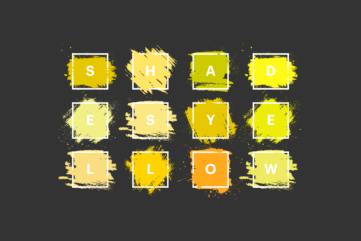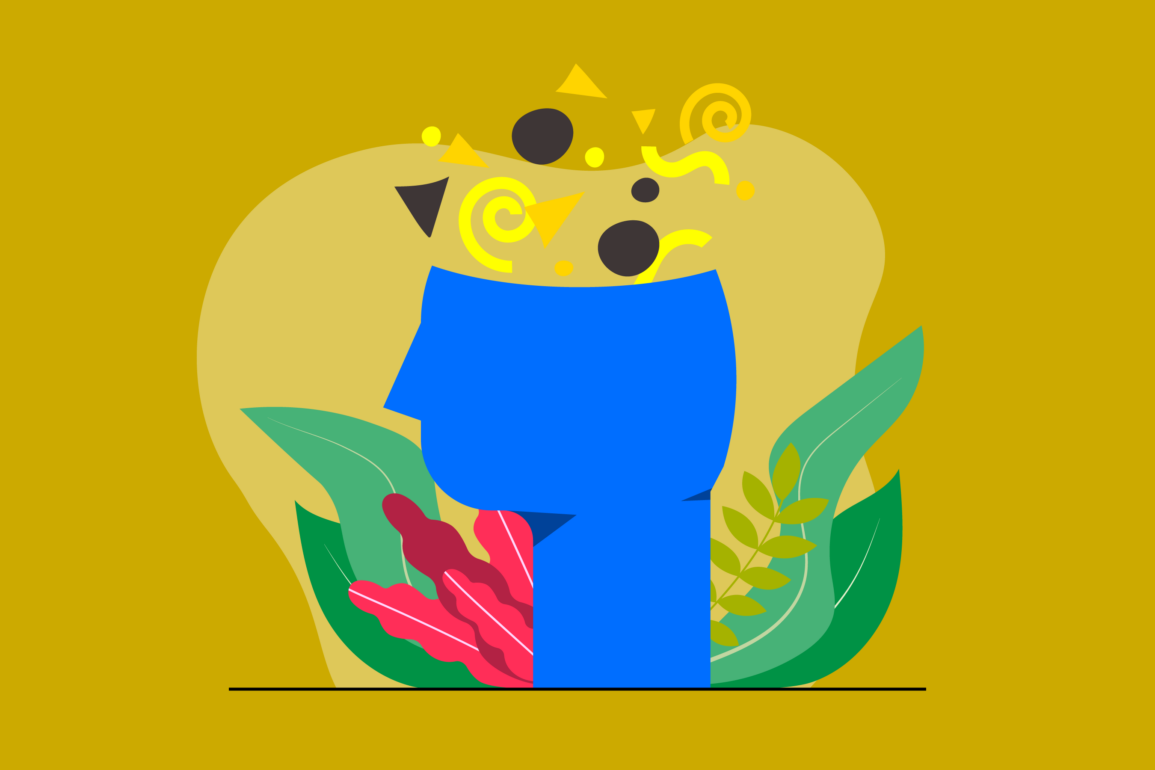A concise history of Christmas colors, and what they really mean

What’s the first thing you think of when you hear the phrase “Christmas colors”? In most parts of the world, the answer is probably rich, bright reds, and deep, vibrant greens. These shades have been connected with Christmas for as long as most of us can remember – but where did they come from?
Throughout the centuries, certain colors have developed a strong link to specific holiday celebrations. During Easter festivities, we’re surrounded by pastel shades of pink and blue. Around Halloween, shades like orange, purple, and black become increasingly common.
At Christmas, it’s hard to imagine a truly festive celebration without at least some red and green elements.
But why are red and green Christmas colors, and are there other shades associated with the advent we should be aware of?
Whether you’re planning to upgrade your holiday décor this year, create a powerful festive marketing campaign, or you just want to learn a little more about Christmas traditions, you’re in the right place.
Today, we’re going to take a closer look at the most popular Christmas colors, and why they’ve become so essential to our holiday celebrations.
What are Christmas colors?
So, what are the colors of Christmas?
No matter where you are in the world, you’re probably familiar with a certain set of distinctive shades which appear in homes, stores, and business locations during the festive season.
While all colors have their own distinctive meaning and emotional impact, how we react to these shades can differ depending on the time of year.
In general, the most common colors associated with Christmas are red and green. Throughout the rest of the year, red is typically associated with concepts like passion, and love. Green is frequently linked to the natural world, plant life, and even wealth in some cases.
During the holidays however, these colors and many others take on new connotations, inspired by history, tradition, and culture. There are many reasons why certain shades have become so intrinsically linked to specific seasons.
The first is that certain colors naturally remind us of specific things. During Halloween, oranges and blacks remind us of darkness, spooky decorations, and pumpkins. On Valentine’s Day, we’re overwhelmed by shades of red and pink, linked to concepts like love and romance.
During Christmas, red is frequently linked to the modern image of Santa Claus, while green makes us think of fir trees, mistletoe, and wreaths. Notably, brands and companies have built on the initial links we’ve had with colors throughout history, to assist with branding and marketing campaigns.
Over the years, companies have discovered using certain shades can help them to connect emotionally with their audience, and highlight their festive spirit.
The history of Christmas colors: An introduction
For most of us, Christmas colors like red and green have been a common part of our festive celebrations for as long as we can remember. However, the origins of these festive shades may go back even further than you’d think.
The meaning of Christmas colors as we know them today is taken from cultures and traditions started centuries ago.
According to Spike Bucklow of Cambridge’s Hamilton Kerr Institute, the roots of Christmas shades date back to a time when people had a much deeper connection with colors in general.
Centuries ago, colors were often associated with spirituality and symbolism, and were used to convey specific ideas at different points throughout the year.
Celtic people, for instance, revered red and green colored plants for being evergreen and capable of consistently blooming throughout the winter seasons. They believed plants like holly were created to keep the world bright and beautiful during the cold, stark months of winter.
These plants were seen as symbols of protection and prosperity, and often used during midwinter celebrations.
As religions like Christianity began to emerge throughout the world, priests and church leaders embraced the existing relationships their communities had with “winter” colors. Red and green began to appear frequently throughout medieval churches and in Christmas decorations.
It helped that the pigments for these colors were highly available through the time, making them affordable and cheap to access for all kinds of décor.
What are the colors of Christmas today?
Initially, red, and green stood as the most common Christmas colors as a result of the plant life available at the time, existing Celtic celebrations, and the affordability of the pigments. However, red took on a much deeper meaning throughout the later centuries, as new brands entered the scene.
Specifically, we can thank Coca-Cola for solidifying the presence of red in modern Christmas decorations. Even during the early 1900s, Coca-Cola used their brand strategy to depict a new version of Santa Claus, completely covered in red clothing.
Coca-Cola’s Santa was an old man with a white beard, rosy cheeks, and red clothing, featuring green accents.
According to experts, Coca-Cola hired an artist to create this new version of Santa Claus with a focus on revitalizing the festive season.
Before Coca-Cola, Santa was often an elf-like, thin figure with red or brown robes. Coca-Cola upgraded this image with a larger, jollier figure, which took full advantage of Coca-Cola’s signature colors.
The juxtaposition of a red-coated Santa Claus, often placed in front of a deep green backdrop became extremely popular throughout America and other parts of the world. It solidified a shared vision of the Christmas spirit, building on the greens and reds of fir trees, holly, and poinsettia, already connected to the festive season.
Soon, Coca-Cola’s version of Santa became the default around the world.
Why are red and green Christmas colors?
Before they were connected with Christmas as we know it today, red, and green already had a significant part to play in many winter celebrations, particularly for the Celtic people.
These shades gained more popularity over the years, as they were infused into religious screens and decorations by the emerging Catholic and Christian communities. Eventually, capitalism and branding also played a role, cementing certain shades in our minds as being essential to the festive season.
Why is green a Christmas color?
As mentioned above, green has had a long-standing connection with the festive season. Before the concepts of “Jesus Christ” and Christmas were introduced, people associated green with life, nature, and growth.
While all other trees tend to shed their leaves during winter, evergreens like holly bushes and fir trees maintained their vitality, making them almost magical to older communities.
These versatile plants were worshipped and celebrated during the festive season, representing ongoing life and prosperity during times of turmoil. The color green therefore became a crucial component in celebrations of life.
The Romans, for instance, celebrated a holiday in mid-December known as “Saturnalia”, which honored the God Saturn.
During this ceremony, Romans would make their own holly wreaths to hang on their walls and doors. These wreaths were a symbol of life, and the Roman’s desire to see the rebirth of the sun, and the return of warmer seasons.
Romans would even place small figures on evergreen tree boughs for decoration. They would also exchange branches of ivy, mistletoe and holy in January to wish good luck and fortune to their loved ones.
Some historians even believe the use of green during winter dates back even further. The Ancient Egyptians would bring palm branches into their home for decorations during mid-winter festivals. In Scandinavia and other parts of the world, green also played a part in virtually every winter event.
These traditions gradually passed into the Christian landscape. When the churches began celebrating the birth of Christ on the 25th of December, believers continued to use wreaths in celebrations of their new God.
Paradise plays were even performed throughout Europe during the Middle Ages around Christmas Eve, narrating the story of the Garden of Eden with green plants. The “Paradise tree” featured in these plays would often be a fir tree with red apples tied to it.
Why is red a Christmas color?
While the color green has long been representative of life and birth, red has frequently been linked to blood and death. For some communities, red was simply an accompanying color to green, often featured on holly bushes and evergreen plants.
However, as Christianity emerged into the world, red was also symbolic of the death of Christ, and his blood on the cross.
Though this might sound like a somewhat morbid way to celebrate the festive season, red wasn’t just a sign of death, but of resurrection and rebirth. The color red also had links to the Paradise play often presented by churches during the holidays.
Since apple trees were left barren in winter, people would use red apples to decorate fir trees instead.
Over time, people began bringing their trees with their bright red ornaments into their homes too. Eventually, the tradition evolved to a point where people would decorate their fir trees with all kinds of red shades, via bows, ribbons, and even baubles.
Notably, the pagan version of St Nick (Santa Claus) was also depicted as a figure wearing red, though the coloring wasn’t quite as bright and vivid as we know today. Coca-Cola helped to enhance this imagery in the 1900s.
However, before this, many bishops and priests wore red around the festive season. Some historians believe this was to symbolize the “love” of Christ.
Red, as a passionate and vivid shade has long been connected with love, and integrity. Even today, we see red as a symbol of romance and adoration.
The 2 most popular Christmas colors after red and green
While red and green might be the classic Christmas colors in many communities, they’re far from the only hues with a festive association.
Diving deeper into the history of Christmas, we can also see a number of other shades commonly connected with the celebration. Each of these colors has its own symbolism and meaning.
Let’s take a closer look…
Common Christmas colors: Gold
Gold is another common shade to see around the festive season, in the buckles and buttons of Santa Claus’s outfit, as well as in Christmas decorations. Both gold and yellow are commonly associated with the sun, light, and joy.
In ancient times, gold was a color frequently connected with prosperity, and wealth. It was also used to symbolize the return of light in the summer seasons.
For Christians and religious individuals, gold also has another meaning. The precious metal was one of the gifts given by the Wise men to baby Jesus. It was also the color of the star these men followed to find Christ.
The color gold has also been used to symbolize eternal life and the majesty of the almighty. The shade has remained a consistent part of Christmas to this day.
Common Christmas colors: Purple
While purple is widely regarded as an unusual shade, commonly associated with wealth and luxury, it is also the main color of the advent. According to Christian teachings, purple is the color of fasting, repentance, and rebirth.
Indeed, many religions now view purple as a spiritual color, connected with the unknown, divinity, and the heavens.
Purple also helps to demonstrate the sovereignty of Jesus Christ in the eyes of the church. Frequently connected with royalty, purple was often used to celebrate the coming of the “king”, or Jesus during the advent.
The first candle of the advent wreath is purple, and the candle of preparation is also purple in most churches. The candle of love, or the fourth candle in the advent is purple too.
Traditional Christmas colors
The meaning of Christmas colors
As our festivities and traditions have evolved over the years, other shades have also made their way into our Christmas celebrations. The traditional Christmas colors mentioned above may be some of the most popular.
However, depending on where you live, you might spot other Christmas color palettes dotted around towns, churches, and homes.
Let’s explore some of the other traditional Christmas colors…
Other Christmas colors: White
White is another phenomenal Christmas color, used in all parts of the world today. Throughout the centuries, this shade has commonly been associated with virtue and purity.
As the Christian religion began to adopt the holiday celebrations around the festive season, many churches used white to symbolize the purity and sinless nature of Jesus Christ. White, like gold, was also a symbol of light and joy.
In most churches, the alter is still covered with a white cloth during Christmas. Russian Orthodox churches, however, choose to use gold instead.
White is the color of peace and purity, and the color of the wafers shared at Communion in churches around the world, used to symbolize the body of Jesus Christ. White is also the color of the snow, which many cultures see in abundance during the holiday season.
Other Christmas colors: Pink
Another somewhat unusual color for the festive season, pink is also evident in the traditional Christian and Catholic advent. Pink is most commonly used during Gaudete Sunday, the third Sunday in the advent.
In this context, pink is representative of love and joy, as well as the emerging shift in the seasons, and the promise of Spring.
The third candle in the advent wreath, known as the Shepherd candle or candle of joy, is pink in color. Today, pink may not be as commonly used on trees and in festive decorations, but it’s still a highly popular shade in some religious celebrations.
Other Christmas colors: Silver
Like gold, silver is another metallic color associated with luxury and prosperity during the festive season. Since the dawn of time, this precious metal has maintained its value as a crucial commodity in human history.
According to Christians and Catholics, silver is representative of the birth and divinity of Jesus Christ.
In many cases, silver is also the color of the cutlery used at Christmas by families joining together for a large winter feast. This helps to cement its position as a charming and meaningful color for families celebrating the advent.
It helps that the color is also excellent at blending with and promoting the unique vibrant features of other Christmas colors.
Is blue a Christmas color?
While blue might not be the first shade associated with Christmas today, it has grown increasingly popular in recent years. For the Christian religion in particular, blue symbolizes Mary, the mother of Jesus Christ.
It’s frequently used in celebrations throughout festive season in churches.
For Christians, blue is a symbol of the healing power of God, the heavenly realm, and the holy spirit. Blue was also considered something of a luxurious color during medieval times, as it was harder to come across than red and green.
Mostly, only the wealthy could afford blue garments.
In modern times, blue is also frequently associated with peace and tranquility. It’s also a relatively cool color, associated with ice and water, which we may see more of during the winter.
As you can see, there are endless options for people to explore when creating the perfect traditional or modern Christmas color palette.
What are the colors of Christmas?
Christmas colors are widely regarded to be an important part of the festive celebration in every part of the world. While green and red are perhaps the most common and traditional Christmas colors, there are endless other options to explore, each with their own distinctive meaning.
Each of the Christmas colors mentioned above has a direct link to a history of festive celebrations, religion, and spirituality. Of course, today, there are plenty of ways to experiment with your Christmas decorations to show your own sense of style, and highlight your personal beliefs.
However, even as the colors we see around Christmas continue to evolve, there’s a good chance certain shades like red and green will remain a key part of the holidays for centuries to come.
Now you know all about the meanings and history of Christmas colors, all that’s left for you to do is choose your own palette for the festive season.
Fabrik: A branding agency for our times.























